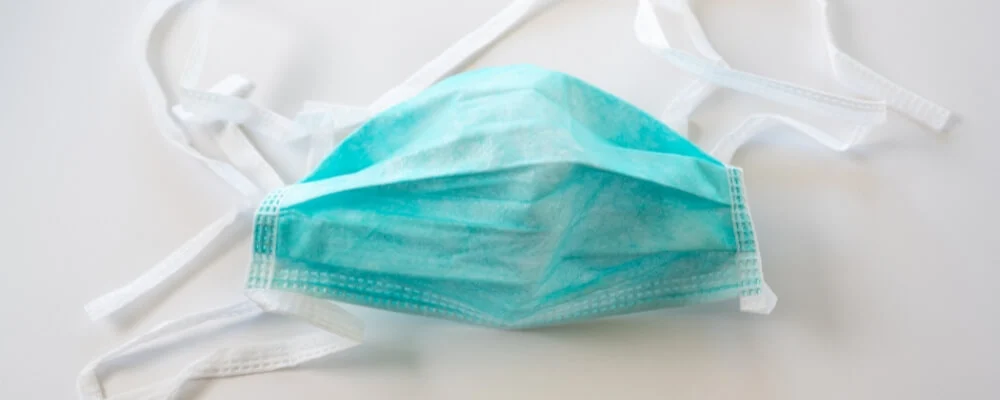Droplet Precautions Personal Protective Equipment (PPE) stands at the forefront of infection control in today’s healthcare landscape. In an era where respiratory diseases like influenza, COVID-19, and whooping cough pose significant threats to public health, properly using PPE under droplet precautions becomes a critical line of defense. These specialized tools and techniques are designed to mitigate the risk of infections that spread through airborne droplets, often generated by talking, coughing, or sneezing.
In this blog, we will delve into droplet precautions by exploring 10 types of PPE, each playing a vital role in protecting healthcare workers and patients alike. From the common face mask to more advanced equipment like Powered Air Purifying Respirators, we’ll unfold how these precautionary measures function and why they are crucial in maintaining a safe healthcare environment. Join us on this enlightening journey as we uncover the intricacies and importance of Droplet Precautions PPE in the relentless battle against infectious diseases.
10 Different Droplet Precautions PPE And Their Importance
“Droplet precautions” refers to steps taken in healthcare settings to reduce the risk of transmitting infections that can spread through droplets in the air. These droplets are often produced when a patient talks, coughs, or sneezes and can transmit diseases like influenza, pertussis (whooping cough), and certain types of pneumonia.
Personal Protective Equipment (PPE) is critical to preventing the spread of these infections. Here are 10 different types of PPE that might be used under droplet precautions and their importance:
1. Face Masks
Face masks serve as a physical barrier, protecting the nose and mouth from coming into direct contact with larger respiratory droplets that may contain harmful pathogens. The masks are designed to filter out these droplets when a person inhales. They also prevent the wearer from spreading infectious droplets to others. Proper usage involves covering the nose and mouth completely and securing the mask snugly on the sides to minimize gaps.
2. Eye Protection (Goggles or Face Shield)
The mucous membranes of our eyes are susceptible to infectious droplets. Goggles or face shields are designed to protect these vulnerable areas. They provide a physical barrier that shields the eyes from splashes or sprays of body fluids and large respiratory droplets. Both goggles and face shields should fit securely to provide effective protection, and face shields offer the added benefit of protecting the other areas of the face as well.

3. Gloves
Gloves are a crucial piece of PPE for healthcare workers, as hands often come into contact with surfaces and patients. They create a barrier that protects hands from direct contact with body fluids, including respiratory secretions. Gloves also prevent the wearer from contaminating surfaces or their face with their hands. It’s important to remember that gloves should be discarded and replaced after each patient interaction, and hands should be thoroughly cleaned afterward.
4. Gowns
Designed to protect the wearer’s body, gowns prevent contamination of the wearer’s clothing with potentially infectious droplets. Typically, these gowns are long-sleeved, tied at the back, and offer full body coverage, including the arms and torso. They are worn during patient interactions or procedures where splashes or sprays of body fluids are possible. Just like gloves, gowns should be properly discarded after use.
5. Respirators (e.g., N95 masks)
Respirators like N95 masks provide more protection than standard face masks. They filter out both larger droplets and smaller aerosols and fit tightly to the face to minimize leakage around the edges. These masks are typically used in healthcare settings during procedures that can generate tiny airborne particles, which can be inhaled more deeply into the lungs. Given their enhanced protection, proper fit-testing and seal-checking are necessary to ensure their effectiveness.
6. Head Covers
Caps or head covers are used to protect the hair and scalp from potential contamination. The hair can become a carrier for infectious agents during medical procedures involving splashes or sprays, such as surgeries or certain diagnostic tests. Head covers reduce this risk by containing the hair and shielding the scalp. They are particularly essential in sterile environments where maintaining cleanliness is paramount.
7. Shoe Covers
Shoe covers provide additional protection by preventing droplets from contaminating the wearer’s shoes. Shoes can easily become contaminated with droplets from the floor or other surfaces and then carry those droplets into clean areas. Shoe covers minimize this risk and are especially useful in environments with a high potential for droplet exposure.
8. Isolation Curtains
While not wearable PPE, isolation curtains are essential in healthcare settings. These curtains create a physical barrier around a patient’s bed or treatment area, helping to contain potentially infectious droplets. This helps to protect other patients and healthcare workers in shared spaces, like hospital wards, reducing the potential spread of infections.

9. Powered Air Purifying Respirators (PAPR)
PAPRs are sophisticated respiratory protection devices that use a battery-powered blower to draw air through filters and deliver it to a hood or facepiece. They are often used when a healthcare worker cannot achieve a proper fit with an N95 mask or in specific high-risk scenarios. PAPRs offer multiple benefits, including cooling the user and increasing filtration efficiency. Their use, however, requires special training and maintenance.
10. Antimicrobial Hand Sanitizers
Though not a form of wearable PPE, hand sanitizers are vital in infection prevention. Regular and correct hand sanitizing can reduce the risk of transmitting infections through hand-to-face contact. This is particularly important in droplet precautions, as contaminated hands can easily transfer droplets to the mouth, nose, or eyes. Antimicrobial hand sanitizers, usually containing alcohol, quickly and effectively kill many harmful microbes on the hands.
These items and strategies form a multifaceted approach to droplet precaution in healthcare settings. Each plays a unique role in reducing the risk of infection transmission, reflecting the complex and interconnected ways droplets can spread. Proper use, adherence to guidelines, and ongoing training in these precautionary measures can significantly mitigate the risk of transmitting diseases through droplets.
Conclusion
Understanding and implementing the 10 different Droplet Precautions of Personal Protective Equipment (PPE) are vital in shaping a robust defense against the spread of infectious diseases in healthcare settings. These measures, ranging from face masks and gloves to Powered Air Purifying Respirators and isolation curtains, collectively build a safety net that safeguards healthcare providers and patients.
By tailoring protection to the unique challenges posed by droplet transmission, these PPE components reflect the complexity of modern healthcare and underscore the unending commitment to safety and well-being. Their importance extends beyond the medical field, contributing to broader public health efforts and reminding us that vigilant and informed care is our most potent tool in the fight against infectious diseases.

